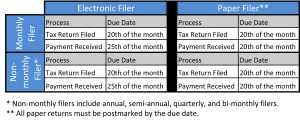1. In QBO > Reports > Review Sales> Sales By Customer Summary to determine active customers in current year.
2. Inactivate Customers not on list.
3. In QBO > Reports > Review Sales>
4. Click Customize link on Customer Contact List
5. When the report comes up, click the triangle to next to Rows/Columns to expand options.
a.) Click Change Columns link.
b.) De-select the default checked values.
c.) Select these columns: Company Name, Shipping Street, Shipping City, Shipping State, Shipping Zip, Last Name, First Name.
d.) OPTIONAL: Drag columns to to be in the order they would appear on an envelope.
e.) Click the triangle to next to Rows/Columns to collapse options.
6. Click the triangle to next to Header/Footer to expand options
a.) De-select all Header and Footer checkboxes
6. Click Run Report.
7. Review data and determine if any data needs to be updated, added, or deleted. You can click in to the customer from this report to edit.
8. Click Save Customization to save this report for future use.
9. Export the report by clicking on the square box w/ arrow icon pointing to the right, next to the printer icon.
10. Open exported Excel document. You’ll need to clean-up a few things before using in a mail merge.
a.) remove the top blank rows (keep column header rows)
b.) remove the left most blank column
c.) remove any blank rows that may be present in the data area.

